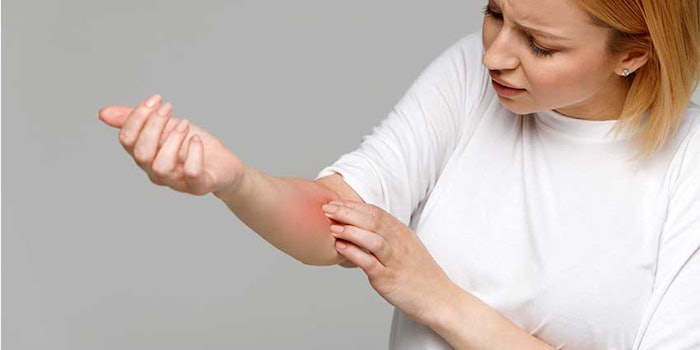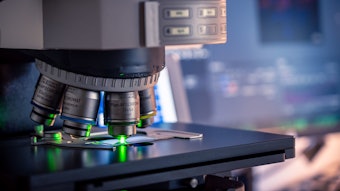
Sytheon recently published the results of a study in the Journal of Investigative Dermatology profiling the mechanistic details of isosorbide di-(linoleate/oleate) and its efficacy as a xerotic pruritic skin treatment.
Related: Scientists Discover Origins of Eczema and Psoriasis
According to the authors, the breakdown of the epidermal barrier and loss of skin hydration is one of the main contributors to skin aging and eczematous dermatitis. However, there few treatments that resolve these underlying problems to provide full symptomatic relief. With that, Sytheon evaluated the topical effects of its patented isosorbide di-(linoleate/oleate) (IDL) in comparison with ethyl linoleate/oleate.
See related: Scientists Discover Origins of Eczema and Psoriasis
Results showed both IDL and ethyl linoleate/oleate downregulated inflammatory gene expression but IDL more effectively upregulated gene expression associated with keratinocyte differentiation (e.g., KRT1, GRHL2 and SPRR4). Consistent with this, IDL increased the abundance of epidermal barrier proteins (FLG and involucrin) and hydration biomarker protein AQP-9; and prevented cytokine-mediated stratum corneum degradation.
IDL also downregulated unhealthy skin gene expression linked to a loss in epidermal homeostasis, and repressed an IFN-inducible co-expression module typically activated in skin diseases such as atopic dermatitis and psoriasis. The results therefore demonstrated mechanisms by which IDL improved skin hydration and epidermal barrier functioning, supporting its application as an effective intervention for the treatment of xerotic pruritic skin.
Read more on the study in the Journal of Investigative Dermatology.










